
A Multitude of Care: Mending in the practice of Maria Cline
Published October 10th, 2023 by Benjamin Merritt
The book, performance, and textile artist relates the care for garments to the care for bodies, particularly those living with chronic illness
How do the objects we live with link us with others? What are ways that artistic processes can work to further our connections to people, and the natural world we live in? What does it mean to be in a body in pain?
Minneapolis-based artist Maria Cline and I talked about these questions in the context of her artistic practice, which involves bookmaking, writing, performance, mending, and textiles. Her body of work evokes notions of care and community through mending, craft, and performances, which are all deeply considered and are characterized by a thoughtfulness around the crafts and processes with which the work itself is created. Maria is an artist whose work is influenced by illness and chronic pain — in our conversation, she mentions that her interest in mending started during a flare-up of illness.
In Fall 2021 I curated a show at Fresh Eye Gallery titled Hold Us Tight, centered around themes of the interpersonal structures of care that surround us. Maria’s artists’ book Care Is Coming (2021) was featured in the exhibition, a handmade book that, in Maria’s words, “was created as a sort of acknowledgment, an ode if you will, or perhaps even a love letter, to my pain.” The book offers an intimate view of the experience of chronic pain, physically, emotionally, and spiritually. Printed on soft, thin mulberry paper, and nestled in a well-crafted triptych book form, the physicality of the book is gentle on our hands, fragile but whole, inviting but resolute. The text, but also the objecthood itself, evoke the vast interpersonal effects of illness — the acts of reading the text and feeling the object are intertwined, as our body is intertwined with the world.
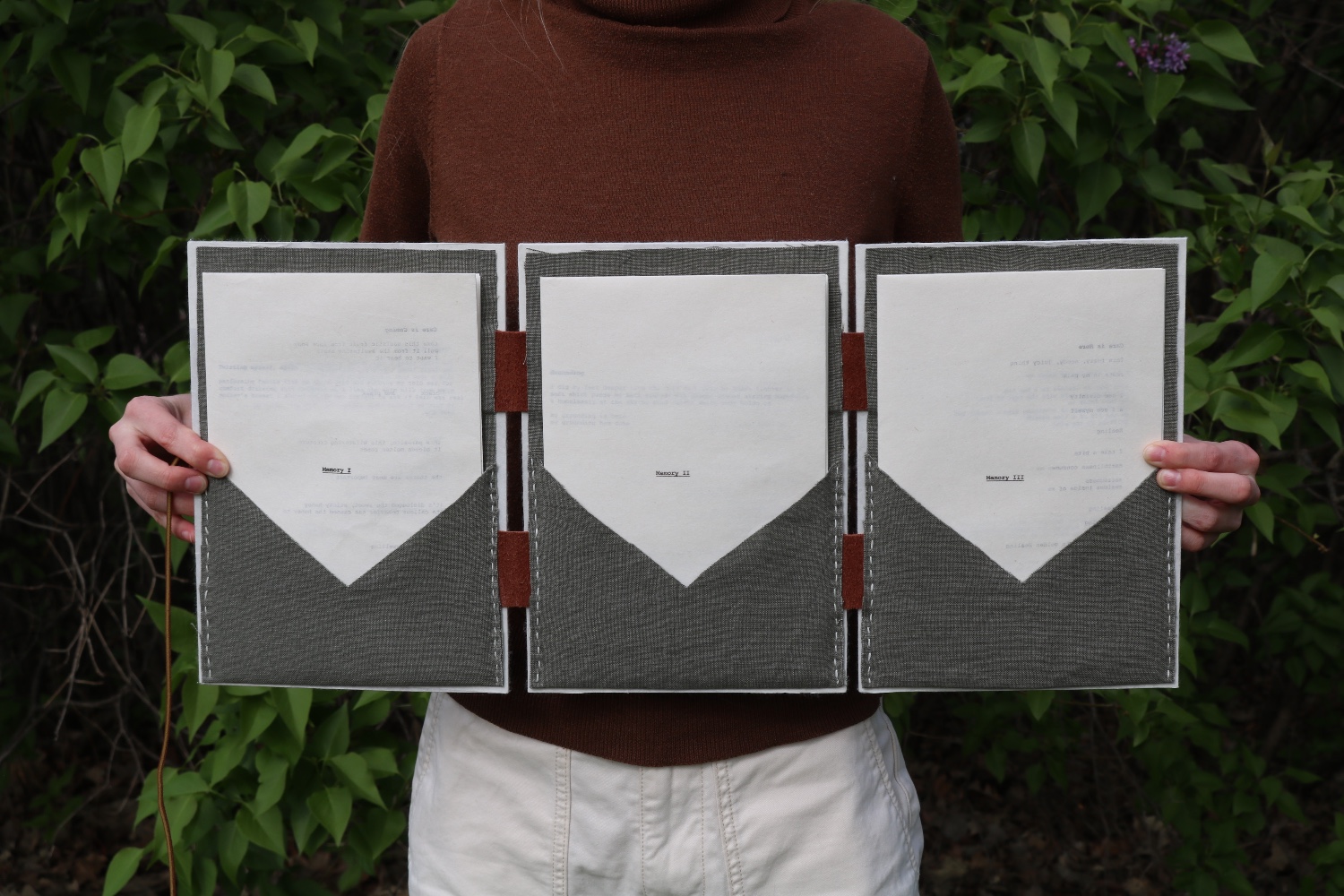 Maria Cline, Care Is Coming, 2021. Artist's book. Photo courtesy of the artist.
Maria Cline, Care Is Coming, 2021. Artist's book. Photo courtesy of the artist.
Since 2021, Maria’s practice has heavily involved the use of textiles, embroidery, and mending. Maria operates a mending service where people can send her old or damaged clothing to repair. She uses a variety of techniques to mend these objects, including patching, darning, sashiko mending (a Japanese technique of visible mending) and boro (another Japanese technique, where garments are mended through extensive patching and visible stitching) and has mended things ranging from a pair of Lederhosen, to jeans, socks, and others.
I asked her about what draws her to the process of mending, and what she feels is important about it. She spoke about the process of mending someone else's clothes as sharing care — care for the clothing object, care for the person, and ultimately, care for the environment. The slowness of the mending process also reflects the ideology of slow fashion: wearing things you care about for as long as you can, rather than subscribing to the rapid-fire, single-digit use of cheap clothing items made to be thrown away. The clothing object is being cared for, of course, because it is being given an extended life. Maria mentions that she doesn’t believe any clothing object is too worn to be repaired — even if it becomes 90% mend, the preservation of the clothing is still important, if someone wants it. This is a unique point of view that is certainly influenced by Maria’s personal experiences — every body is worth care and mending, just as every garment is. Her practice of mending, as well as her artists’ book, offer a uniquely comforting view of care and the interpersonal that is rooted in the physicality of objects.
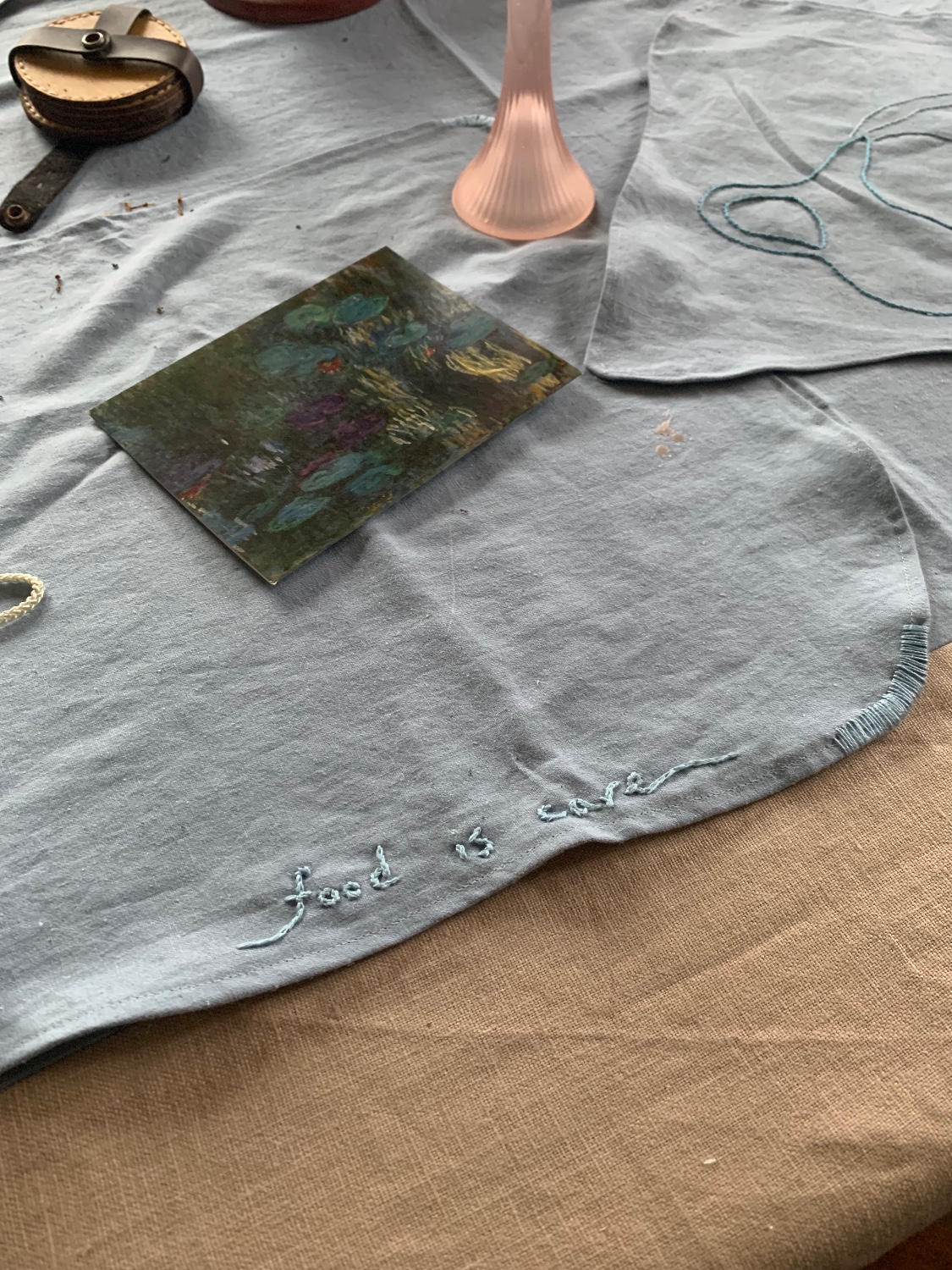
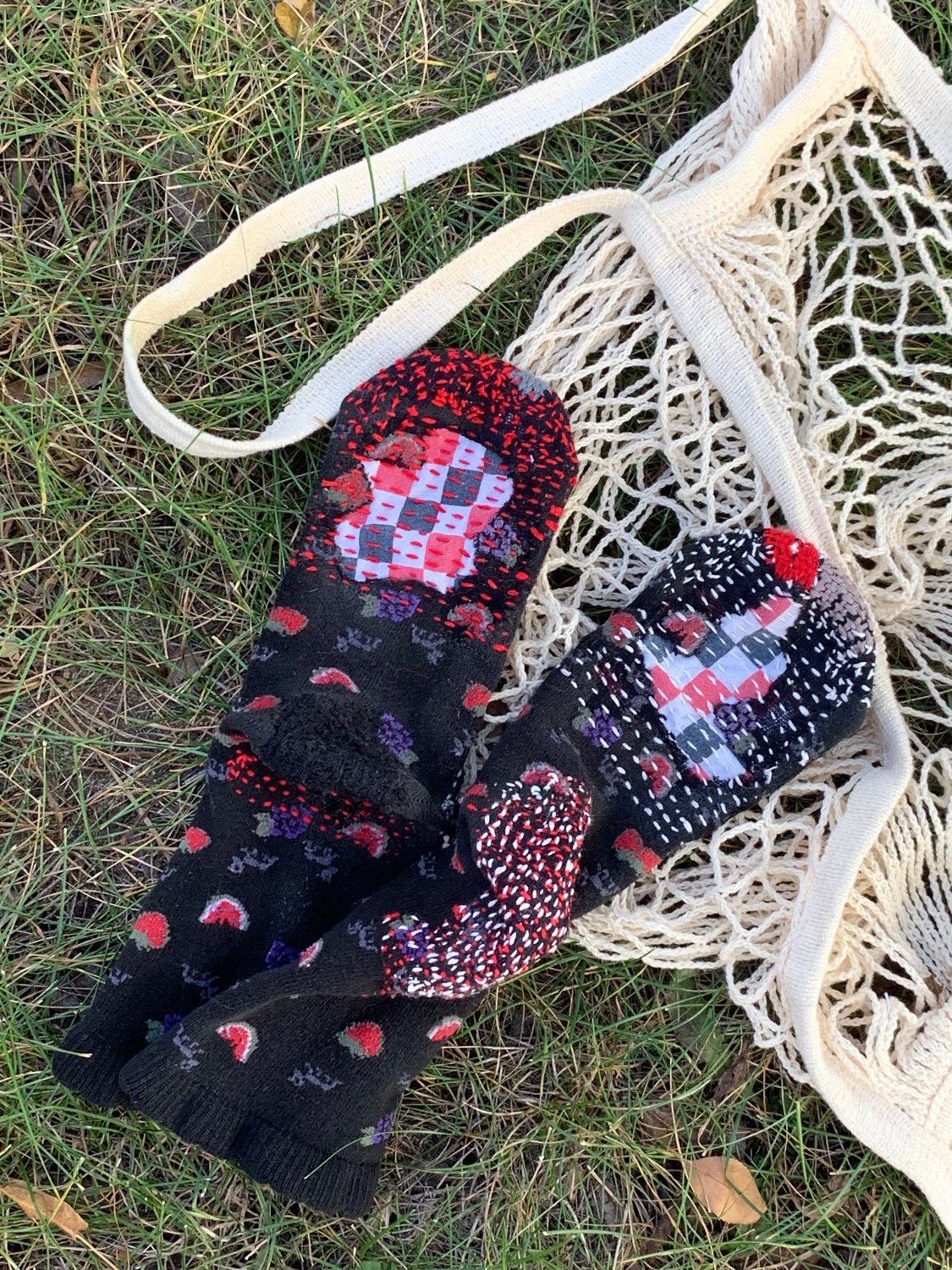 A mended tablecloth and socks. Photos courtesy of the artist.
A mended tablecloth and socks. Photos courtesy of the artist.
Mending also shares care for the individual whose clothing is being repaired. Maria mentions that during the meditative practice of mending she often is thinking of the individual, carving out space to hold that individual in her thoughts. This intentional time to spend mending someone's clothing is an important moment of slowness where the primary focus is the relationship between people and how objects illustrate this relationship. Her emphasis is not only on the object being repaired, but for whom it is being repaired. This intimate link between artist, object, and who uses the object after is indicative of the care she puts into her craft. Maria thinks of her textile work as a “soft cocooning,” a cocoon that provides the wearer with a protective wrapping, but also herself, giving her time with a meditative process and space to contemplate her pain.
The last piece Maria and I talked about is a tapestry that she began a year or so ago. The tapestry is a hand stitched text-based piece that takes a line of text from her Care Is Coming book: “I see divinity and I see myself healing.” Maria is reworking this piece because she wasn’t happy with it formally, but she also sees a different sentiment in the piece now. When she began this piece, she says, it was a hopeful, triumphant sentiment of an affirmation. Now, the statement feels like a slap in the face. She is returning to this piece to challenge this sentiment, to make it more truthful to her current experience.
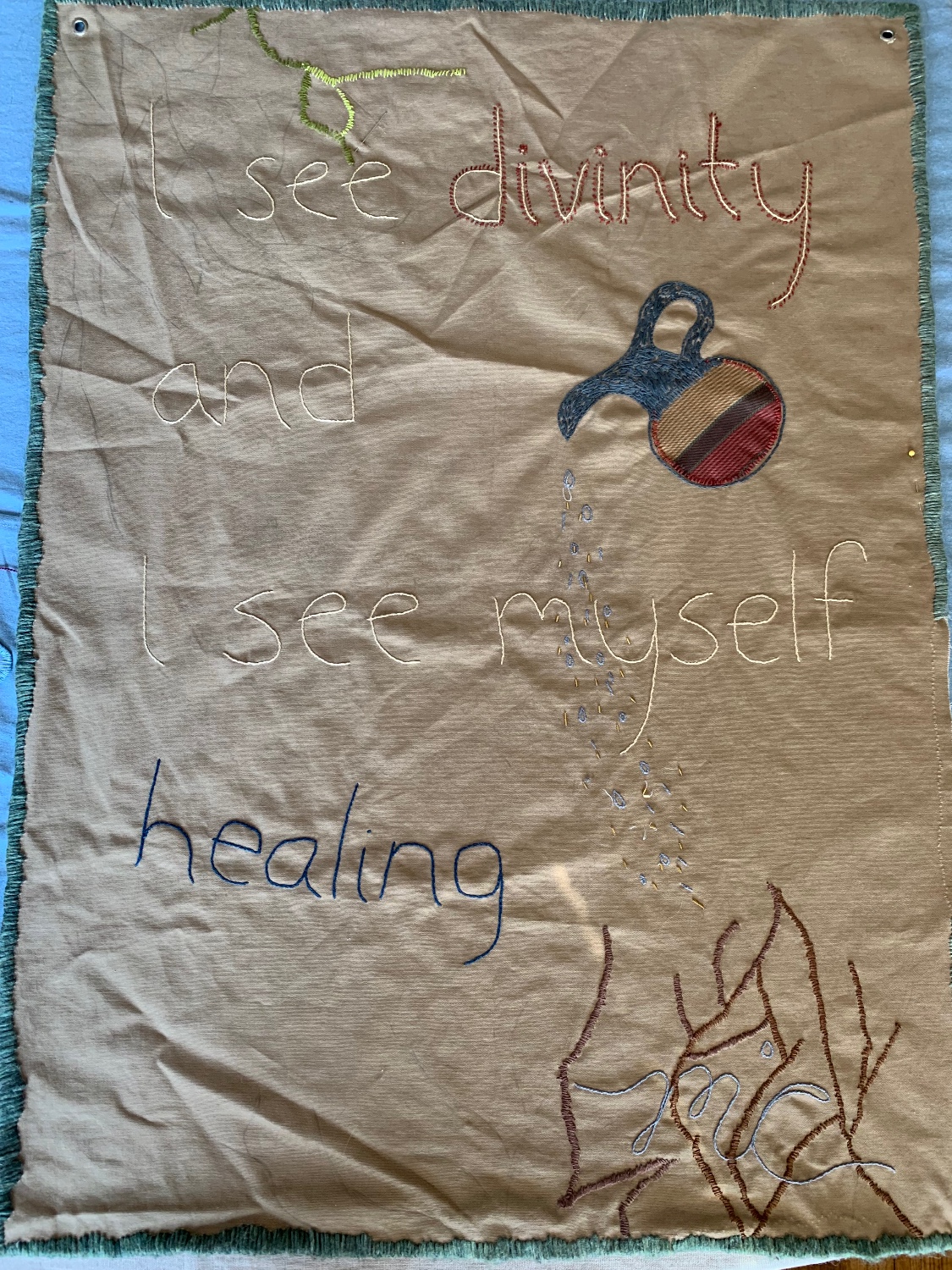 Healing Tapestry in progress. Photo courtesy of the artist.
Healing Tapestry in progress. Photo courtesy of the artist.
What does healing look like, when healing doesn’t mean perfection? The practice of mending for Maria is a lifelong practice, just as the practice of healing is. Her work is full of care — care of herself, care for others, and the seeking of care within systems that aren’t solely the medical system. How do the clothes we live in take care of us, and how do we take care of others through small gestures? These points of contact between ourselves and others are what is at the core of Maria’s work, a tapestry of mendings for multiple bodies. The answers to these questions will most likely never reveal themselves, but that’s okay — the closest we can get is to try. Maria’s work gives us a chance to think of the lifelong journey of disability and chronic pain as our favorite garment: let us repair, time after time, the holes that appear in the points of tension, until the garment is more mend than the original garment. This vital act of care is what will keep us alive.
In “On Being Ill,” Virginia Woolf writes of the solitude of illness: “We do not know our own souls, let alone the souls of others. Human beings do not go hand in hand the whole stretch of the way. There is a virgin forest in each; a snowfield where even the print of birds’ feet is unknown. Here we go alone, and like it better so.” Maria’s work offers a counterargument to this solitude, that we are inseparable from other people and other things, and the care given to one another — and the objects we live with — is the primary way to grow these connections. When I engage with Maria’s work I feel that my experience of illness is hand-in-hand with other people's experiences of the same thing. I think of all the mended clothing, each stitch considered carefully, holding people each day. There exists a multitude of care that lies right before us, hidden in each person's pocket or in their shoe, connecting us to each other. ◼︎
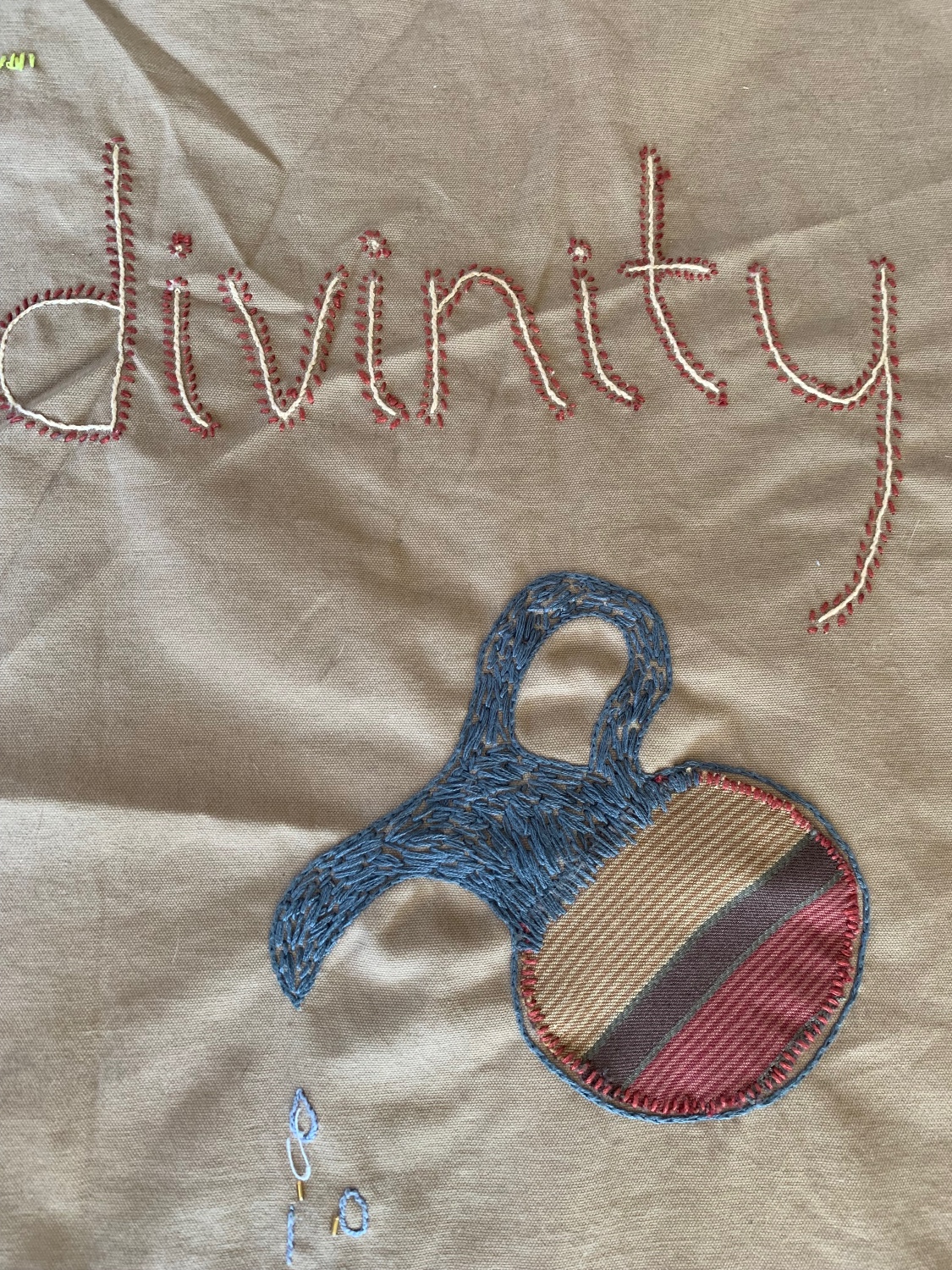 Photo courtesy of the artist.
Photo courtesy of the artist.
To see more of Maria Cline's work, visit her website or follow them on Instagram @maria_cline.
This activity is made possible by the voters of Minnesota through a grant from the Metropolitan Regional Arts Council, thanks to a legislative appropriation from the arts and cultural heritage fund. 
We can't do it without you.
Help keep independent arts journalism alive in the Twin Cities.